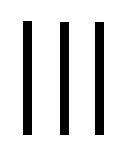Quantity facts for kids
Quantity is simply how much of something there is. It tells you 'how many' or 'how much' of something exists. You can find a quantity by counting or by measuring.
Contents
Counting Things
When you count, you use whole numbers like 1, 2, 3, and so on. To count a group of items, you point to each one and say the next number. You start with 'one'. When you point to the last item, the number you say is the total quantity of that group.
Measuring Things
Measuring helps us find quantities that aren't easy to count, like length or weight. We use tools like rulers or special machines. For example, you use a ruler to measure how long something is. You use a scale to measure how heavy something is, which is called its mass. Other machines can measure things like temperature, speed, or even electric current.
Using Decimal Numbers
Sometimes, a whole number isn't enough when you measure. Imagine a distance that is longer than 5 meters but shorter than 6 meters. This is where decimal numbers come in handy.
A meter stick is marked into ten equal parts. Each part is a "tenth" of a meter. So, 5.2 meters means 5 full meters and two-tenths of another meter. 5.7 meters is a bit closer to 6 meters. These tenths can be divided even further into smaller parts, like the 100 centimeters on a meter stick.
Using Fraction Numbers
Fractions are used when you have parts of a whole number. For example, a machine's dial might show marks between whole numbers. If you weigh a bag of potatoes, it might show five and three-quarters kilograms. This means it's almost six kilograms.
When to Use "Amount" or "Number"
People often mix up the words "amount" and "number." Here's an easy way to remember:
- Use amount for things you can't easily count individually, like "a large amount of sand." You wouldn't say "three thousand sands."
- Use number for things you can count individually, like "a large number of people." You could say there were 3,547 people.
Examples of Quantities
Here are some more examples of quantities:
- 1.76 liters of milk. This is a continuous quantity, meaning it can be divided into smaller and smaller parts.
- One apple, two apples, three apples. Here, the number shows how many separate items there are.
- 500 people. This is also a count of individual items.
- A couple usually means two objects.
- A few means a small number, usually more than one.
- Quite a few means a surprisingly large number.
- Several means an indefinite, but usually small, number, often more than "a few."
See also
 In Spanish: Cantidad para niños
In Spanish: Cantidad para niños


